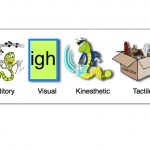Practical Tips for Apraxia of Speech
Practical Tips for Apraxia of Speech
In this blog, we will discuss Practical Tips for Apraxia of Speech. Apraxia of Speech (AOS) is a speech sound disorder. Further, the person has difficulty in the oral movements required for the speech sound. In other words, AOS exists without any muscle weakness. TThe person has a normal muscle tone, strength, and movement, but is not able to say speech sounds.
In typical AOS we can see the person struggling to make the sound. Moreover, he/she look like they are searching where to place the speech muscle such as lips and tongue. Therefore, searching and groping are very common in AOS. AOS can exist in isolation or it can co-exist along with oral apraxia.
Firstly, Speech and language therapy plays an important role in the treatment of AOS. Further, this article gives some useful tips which need to be considered while treating AOS.
Practical Tips for Apraxia of Speech
1. Interactive Session:
Make the session interactive.
For example: for /b/ sound, you can give the following instructions to the client:
-
- Put your lips together
- Hold your breath behind your lips
- Release your breath at once
Further, you can work with the sound in a meaningful context. Choose simple CV and CVC words to practice. Some examples can be ‘bee’, ‘bow’, ‘boo’, etc.
When you are dealing with children, turn-taking and interactive games are done.
2. Integrate all the senses- multi-sensory approach:
Use a combination of all the senses works better in the case of AOS. Use a combination of auditory, visual, and tactile cues to teach a sound. Let’s take the example of teaching the /b/ sound to the child. Using a multi-sensory approach we can do the following:
-
- Put the lips together- a visual cue
- Say the /b/ sound three times. Repeat after me ‘ba’, ‘ba’, ‘ba’- auditory cue
- Put your hand in front of your mouth and feel the air coming out of the mouth when you cay the /b/ sound- tactile cue
3. Intensive therapy session- more frequent
Firstly, frequent speech therapy sessions will help. Secondly, It’s ideal to have 3-5 therapy sessions planned in a week. However, having a dedicated parent program is advised. A parent program will make sure the activities are carried at home.
In addition, owing to loads of variations in individuals with AOS, individual therapy sessions will be beneficial. It is advised to start with individual sessions.
4. Work on the intonation- prosody training:
Additionally, the speech sound errors, individuals with AOS also exhibit atypical prosodic patterns. In other words, these individuals have improper stress, pauses, and atypical pitch. First, use the prosodic patterns of stress, intonation, pitch, and rhythm in the therapy sessions. Then, for children singing songs, rhymes, humming, chanting, etc is done.
For adults, specific prosodic features are done along with the target sound. This is done at word, phrase, and sentence levels.
5. Giving time to use the learned skill- generalization
A very important part of the therapy session is giving time to use the learned skill in daily life situations. This is a generalization. Giving time for generalization helps is the transfer of the learned skills from a familiar situation to an unfamiliar situation. Ample opportunities for generalization help for better retention of the learned skill. At first, do it with the help of the therapist and later the dependency on the therapist should be gradually reduced.
6. Giving feedback about the session- knowledge of results versus knowledge of performance:
Feedback plays a very important role in learning new skills. As a therapist, we need to decide what kind of feedback we need to give to a client, which in turn is based on the client’s learning style.
For few clients, knowledge of results may turn out to be useful. It involves giving feedback about the utterance i.e, it the utterance was correct or wrong. For example, if the target word is ‘ball’ and the client says ‘all’, the therapist would say “No, that is wrong. Can you say ball?”.
Knowledge of performance would be more open-ended. The therapist would just repeat what the client said and would give corrective feedback. For example, if the target word is ‘ball’ and the client says ‘all’, the therapist would say “I heard it as all. Can you add ‘b.. in the beginning and say it again?”
- Speech Activities for Father’s Day - June 21, 2021
- Speech tips for Muscular Dystrophy - June 9, 2021
- Practical Tips for Apraxia of Speech - May 29, 2021





Leave a Comment
(1 Comment)
So many great tips here! As I learn more about Principles of Motor Learning, I can see how important it is to CAS treatment. Think it’s great you included the note about feedback in here!
Categories
Recent Posts